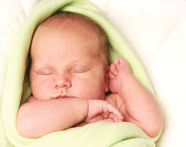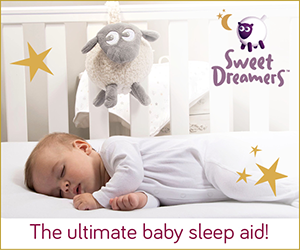Your baby’s sleeping soundly…or is she?

Cot Death, or Sudden Infant Death Syndrome (SIDS), affects three families every week in Canada. SIDS is an unexplainable death of an infant, and leaves our community asking some big questions. Charlotte Wenham, a former Emergency Nurse and mother of two boys, explores this topic.
“One night during his flu the breathing monitor alarm went off, it was 2:25 in the morning – not his usual wake up time”, says Angela, a mother and accountant from Calgary. “When I rushed into his room he wasn’t stirring so I picked him up, upon doing that I heard him take a huge gasp of breath while choking through mucus. He started crying, I knew he had stopped breathing.” This happened just before Christmas, when Connor was just a few months old, Angela explains.
Angela’s story could be so different. Every week, three families experience the loss of a baby to Sudden Infant Death Syndrome (SIDS) in Canada. As women and mothers, we like to talk, to share our experiences, our hopes and our dreams. But, there is a topic that is almost too taboo to talk about out loud. Despite 200 babies a year dying in Canada from SIDS, we are still reluctant to talk about it. Is this because we fear that by talking about SIDS, we accept it and invite it into our lives?
According to the American Academy of Pediatrics, SIDS is ‘the unexpected death of seemingly healthy babies 12 months or younger’. No cause of death is found. Basically, we don’t know what SIDS is. Yet, in 2005, 200 families in Canada were told that there was no reason why their baby died.
So what do we know? There are a lot of conflicting opinions as to what causes SIDS, how to reduce it, and what babies are at the highest risk. Since 1994, when the Safe Sleeping Recommendations were introduced, SIDS deaths have reduced by over 50%. Unfortunately, despite these initial reductions, in the last decade we have not seen much of a drop in the SIDS rate.
The only thing we know for certain is that at some stage, a healthy, happy baby stops breathing, stops moving, and passes silently away. This is a fear for many parents, and some of these same parents live with the horrible reality of this every day. If these baby’s parents were alerted, could they have done something to prevent their baby dying? Maybe, maybe not. Nobody knows for certain. But, regardless of whether they could, most parents would do anything to have the opportunity to try.
Aurora lost her baby boy to SIDS just three weeks before his first birthday. Within a week of his death at daycare, she learned that she was pregnant again.
‘As you can imagine… my concerns and fears are just overwhelming.’ Aurora wrote. ‘I would like to monitor this baby for the next 18 years – now of course, I know that’s impossible, but I would like to monitor him or her for about 2 years (18 months at the very very least).’ While we will never be certain if a monitor could have helped Aurora’s little boy, the peace of mind that a monitor can offer her is priceless. Around 20% of all SIDS deaths happen while the baby is with another caregiver out of their home environment.
As a mother, I want to know that I have done everything I can to keep my children safe, wherever they are. One of the big decisions I made was to use a movement monitor. To be honest, there were a lot of choices out there. But after looking at all the choices available, and looking at the lifestyle that my husband and I have, I decided that the best option was a portable, wearable movement monitor. This meant that we could monitor our baby whether we were at home, at a friend’s house for dinner, or if he was sleeping in a portable crib at his Grandparents home. Knowing that he is monitored wherever he is – that is priceless to me.
In my experience as an emergency trained Nurse, I have used a lot of different machines and devices to help save lives. Some of these are simple things, like blood pressure monitors and blood sugar testers; others are more complex like heart defibrillators. These machines have helped to save lives, there have also been times when these same life saving machines have been unable to prevent someone dying. Every day we use devices to protect us from hazards. Smoke detectors alert us of a possible fire (or just the burnt toast); infant car seats can reduce the injury to our baby in the event of a car accident. Neither of these has been proven to prevent death, but they do significantly reduce the severity of injury.
A breathing and movement monitor, on its own, is only rubber, plastic, and other electronic components that give us information – an inanimate machine. However, with basic first aid knowledge and access to medical professionals, lives can, have been, and will continue to be saved with the help of such devices.
Over your child’s life, self-proclaimed experts, health care professionals, other parents and people in the street will give you their opinion on what is best for you and your child. Hopefully, the information I have shared with you here will help you to make the best choice for you and your baby. After all, isn’t that what matters?
Charlotte Wenham (BN RN MM Grad Cert Emerg Nurs) is an Emergency Nurse and mother to two young boys. In her experience as a nurse in emergency departments she cared for many babies who ‘just stopped breathing’. She strongly believes in the value of using a movement monitor, and used a portable monitor in the first year of life of both her boys.





